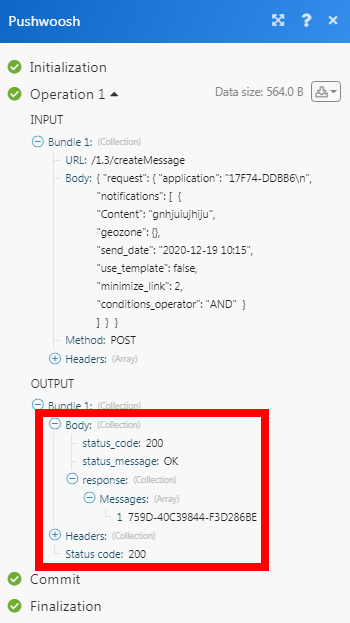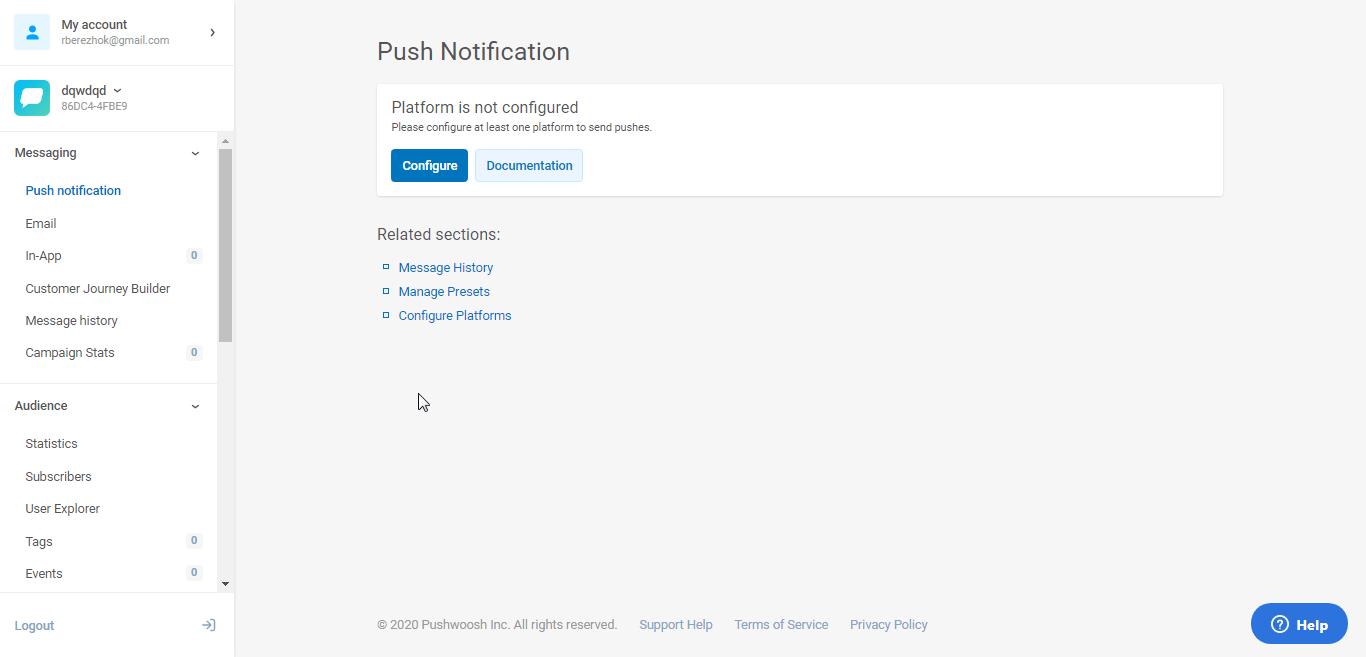Pushwoosh
The Pushwoosh modules allow you to create, list, retrieve, and delete the notifications in your Pushwoosh account.
Getting Started with Pushwoosh
Prerequisites
A Pushwoosh account
In order to use Pushwoosh with Make, it is necessary to have a Pushwoosh account. If you do not have one, you can create a Pushwoosh account at go.pushwoosh.com/cp/register.
Note
The module dialog fields that are displayed in bold (in the Make scenario, not in this documentation article) are mandatory!
To connect your Pushwoosh account to Make you need to obtain the API Token from your Pushwoosh account and insert it in the Create a connection dialog in the Make module.
1. Log into your Pushwoosh account.
2. Click the Application for which you want to establish a connection > API Access > Generate New Access Token.
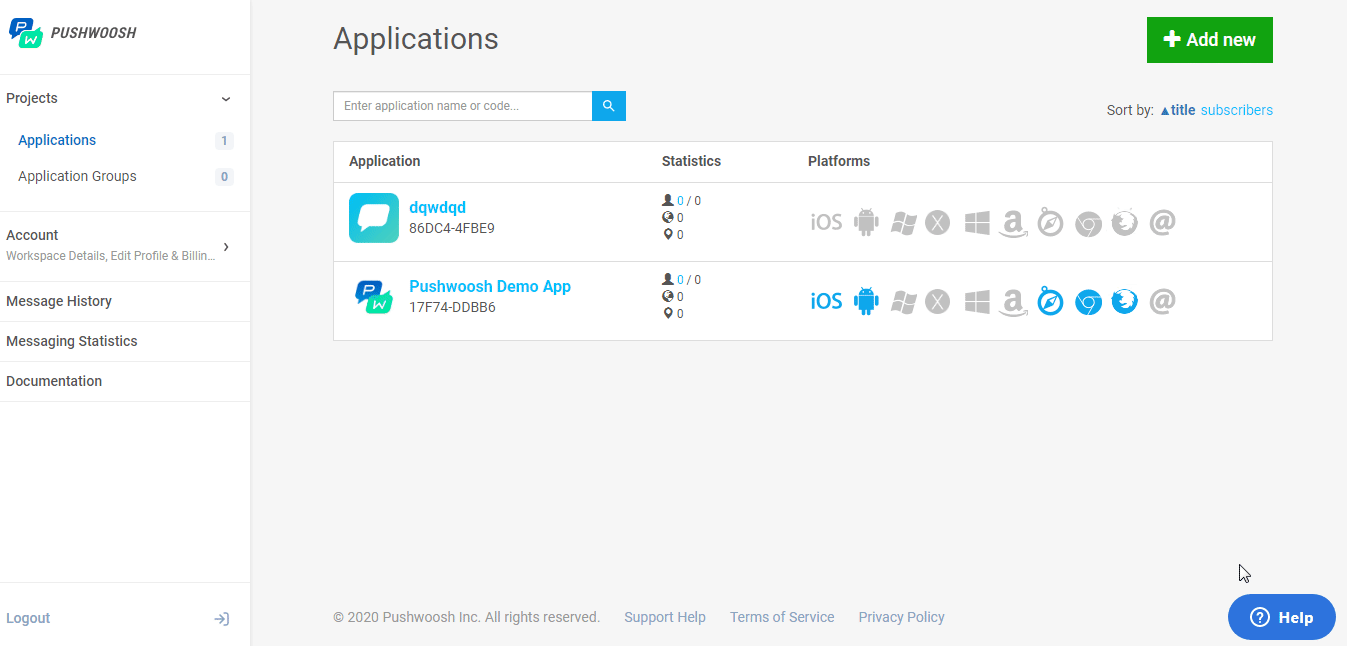
3. Enter a name for the API, select the access permissions, and click Save.
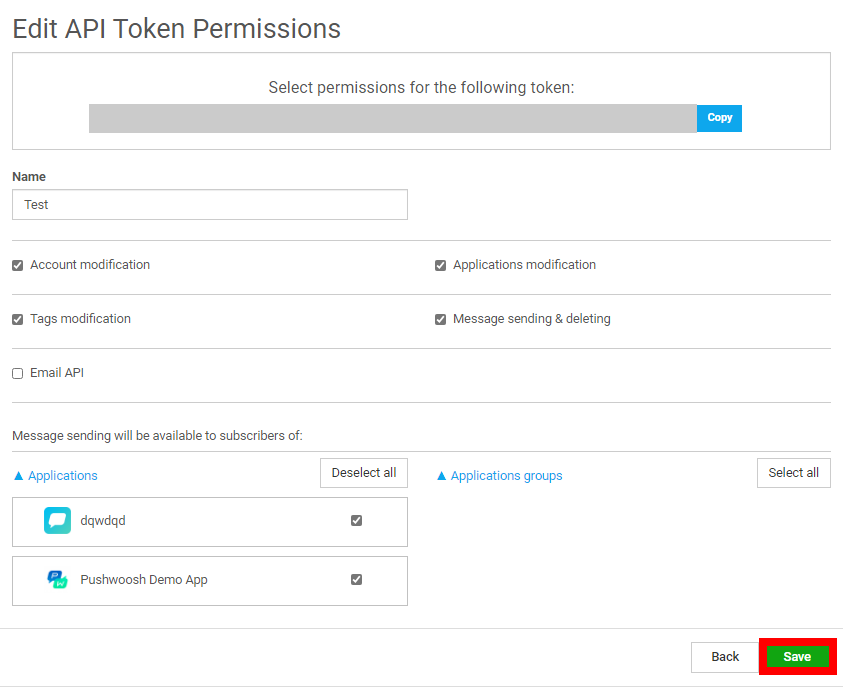
4. Copy the API key to your clipboard.

5. Go to Make and open the Pushwoosh module's Create a connection dialog.
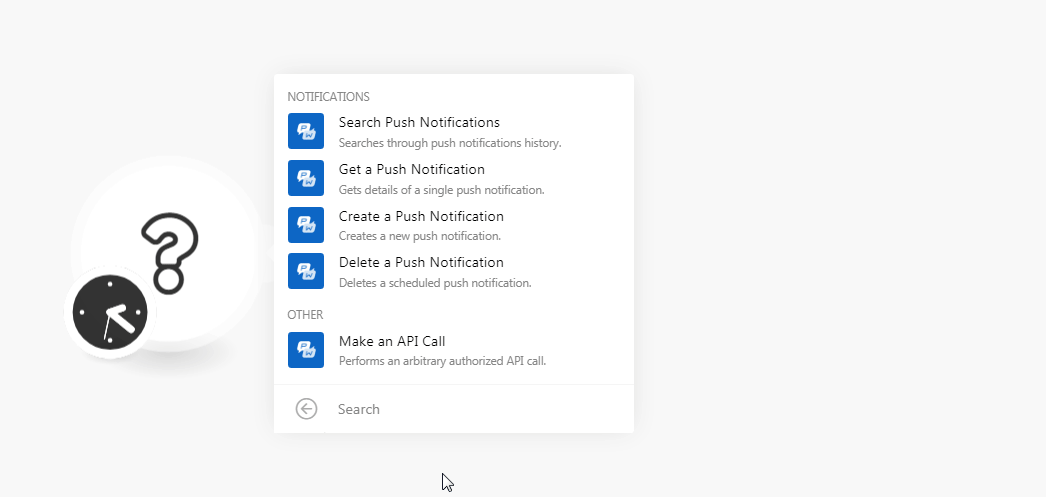
6. In the Connection name field, enter a name for the connection.
7. Select the checkbox if your application has a private subscription offer.
8. In Your Pushwoosh API Token field, enter the API token copied in step 4 and click Continue.
The connection has been established.
Search Push Notifications
Searches through push notifications history.
Connection | |
Source | Select the source of the notifications you want to search. For example, Twitter, Autopush. |
Search By | Select the option to search the notifications:
|
Last Message ID | Enter the Last Message ID from the previous list push notification call. |
Limit | Set the maximum number of notifications Make should return during one scenario execution cycle. |
Get a Push Notification
Get details of a single push notification.
Connection | |
Message Code | Enter the message code from the notification request whose details you want to retrieve. |
Create a Push Notification
Creates a new push notification.
Connection | |||||||||||||||||||||||||||||||||||||||||||||||||||||
Application Code | Enter the application code in which you are creating a push notification. You can find the application code on your account's application page.  | ||||||||||||||||||||||||||||||||||||||||||||||||||||
Notifications | Add the notification details:
|
Delete a Push Notification
Deletes a scheduled push notification.
Connection | |
Message Code | Enter the message code from the notification request which you want to retrieve. |
Make an API Call
Performs an arbitrary authorized API call.
Connection | |
URL | Enter a path relative to NoteFor the list of available endpoints, refer to the Pushwoosh API Documentation. |
Method | Select the HTTP method you want to use: GET to retrieve information for an entry. POST to create a new entry. PUT to update/replace an existing entry. PATCH to make a partial entry update. DELETE to delete an entry. |
Headers | Enter the desired request headers. You don't have to add authorization headers; we already did that for you. |
Query String | Enter the request query string. |
Body | Enter the body content for your API call. |
Example of Use - Create a Message
The following API call creates the message from your Pushwoosh account:
URL: /1.3/createMessage
Method: POST
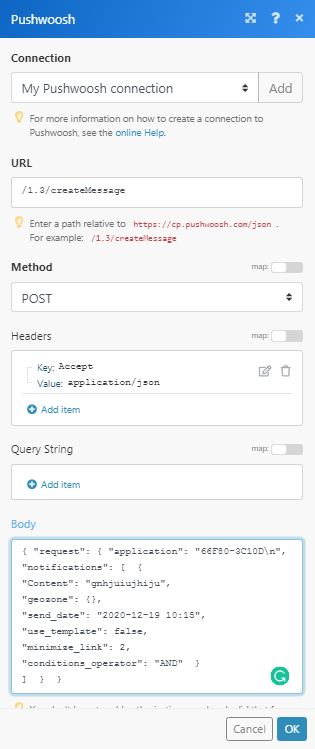
Matches of the search can be found in the module's Output under Bundle > Body > response > Messages. In our example, the message is created successfully.
